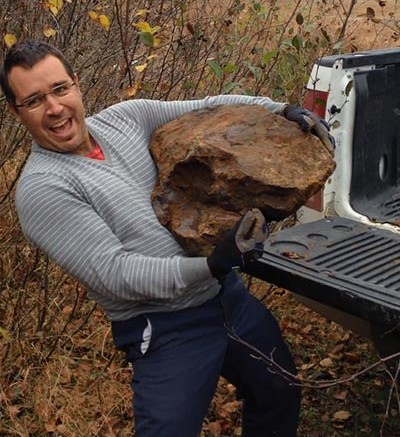Sometimes the cleverest path is to follow someone else’s road.
That’s what Martin Dallaire of Visible Gold Mines (TSXV: VGD; US-OTC: VGMIF) did in 2011 after watching then-Quebec premier Jean Charest on television announce that his government would build a 243 km all-season road in Quebec’s James Bay region linking Stornoway Diamonds’ (TSX: SWY; US-OTC: SWYDF) Renard project to the provincial highway network as part of its ambitious Plan Nord project.
It dawned on Dallaire that all he needed to do was follow the construction workers building the road and collect rock samples from new rock cuts and strippings along the way.
Over the next two and a half years, Dallaire and his men slept in the same camps as the construction crew, bagged samples and quietly staked ground on either side of the road for distances ranging from a minimum of 3 km up to as much as 15 km in some spots.
In September, Visible Gold said it had discovered four rusty, angular boulders mineralized with gold, silver, copper and zinc, 320 km north of Chibougamau. The best sample returned 38.76 grams gold per tonne, 68.40 grams silver per tonne, 2.1% copper and 0.02% zinc.
A month later, McEwen Mining (TSX: MUX; NYSE: MUX) — headed by mining mogul Rob McEwen, and serial investor Ned Goodman of Dundee Securities — invested $500,000 and $1 million through private placements in Dallaire’s company.
“They loved the story,” Dallaire says. “They said it was genius — they said I was a genius.
“They said these high-grade boulders don’t come out of nowhere, they don’t come out of the sky, take your time and find them.”
Dallaire says he believes the source of the boulders could be within a radius of as little as 2 km.
On Nov. 4, Visible Gold announced it had discovered a second high-grade-gold boulder zone and on Nov. 11 reported another. Boulders from both groups returned assays including 142.5 grams gold, 22.2 grams silver, 0.6% copper and 0.02% zinc in one sample; and 63.83 grams gold, 27.80 grams silver and 0.2% copper in another.
The boulders are composed of alteration minerals with semi-massive to massive sulphides, and so far the company has covered less than half of its 110 km of road.
Dallaire says the company has just completed a 4,000 km airborne survey using a detailed helicopter-borne magnetic and time-domain electromagnetic survey, and the preliminary results will be released shortly.
Dallaire expects to drill before 2015 and hopes to finish at least 25 holes of 150 to 200 metres each, in the first pass.
“I’m due to find a mine,” Dallaire says, an engineer by training who joined the mining industry in 2004. He believes Visible Gold could even be the next Virginia Mines (TSX: VGQ; US-OTC: VGMNF). Virginia Mines discovered the Éléonore gold deposit in Quebec’s James Bay region, which Goldcorp picked up in 2005 for US$420 million.
On Nov. 17, Virginia Mines combined with Sean Roosen’s Osisko Gold Royalties (TSX: OR; US-OTC: OKSKF) in a merger deal worth $461 million.


Be the first to comment on "Visible Gold follows the yellow brick road"